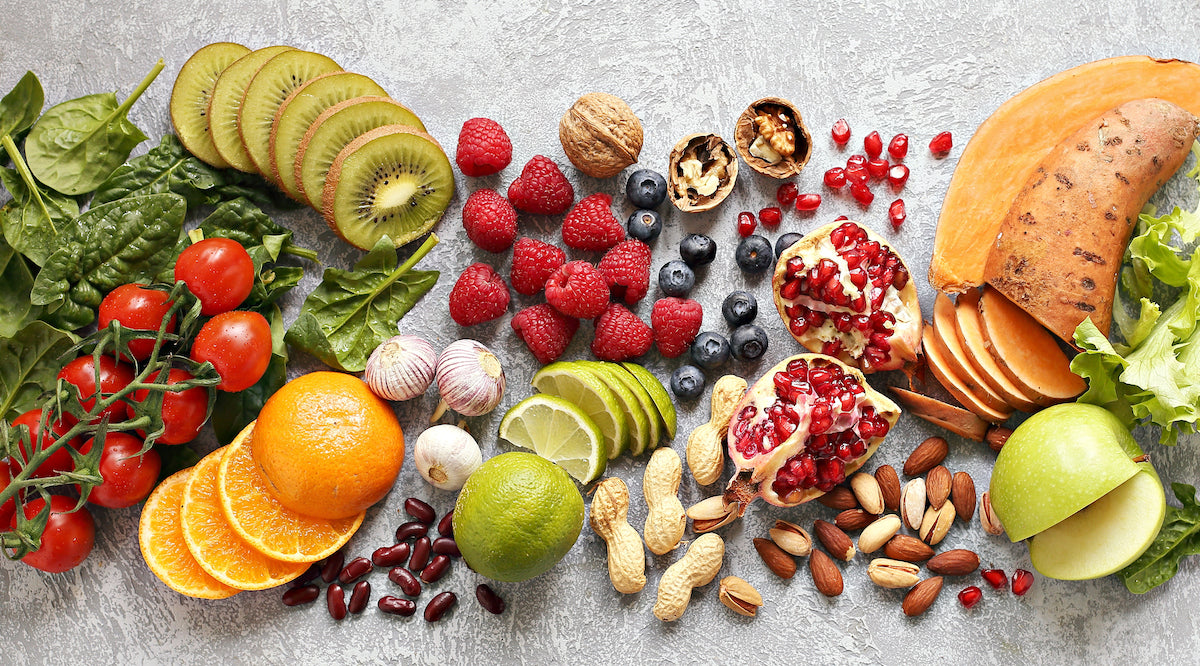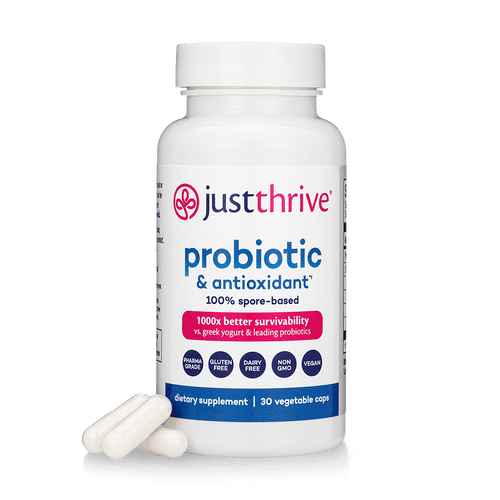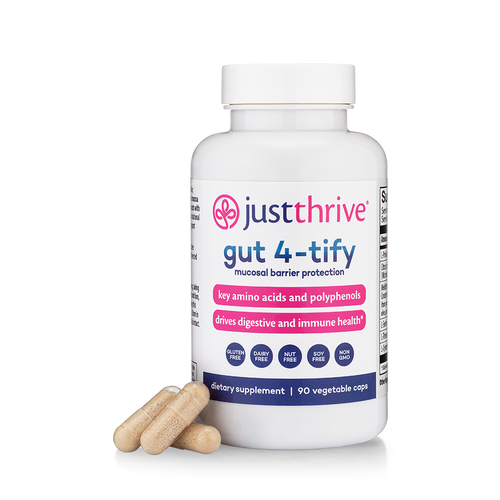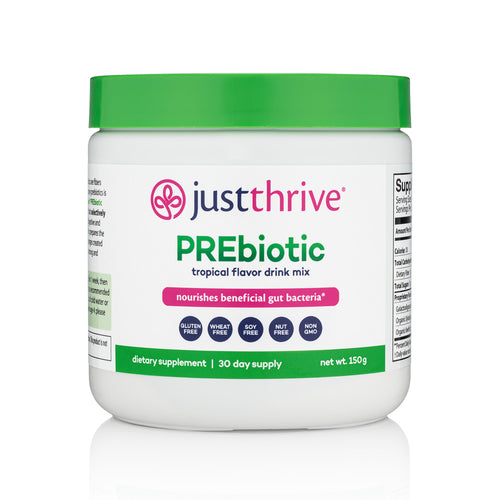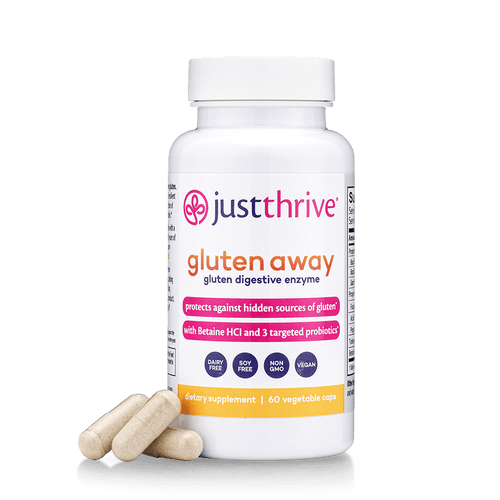Learn what a raw food diet is, its health benefits and risks, foods to eat for raw nutrition, and how to support your gut health on a raw food diet.
People have been constructing raw food diets since the 1800s. However, it’s only recently become a popular diet option for the masses.
In fact, advocates and supporters of raw food nutrition believe that this diet offers huge benefits to consumers, especially when it comes to weight loss.
However, some experts disagree with the idea of consuming mostly raw foods and argue that it can lead to both minor and major health risks in the long run.
So today we are taking a deep dive into the raw food diet, its health benefits, and its risks, so you can decide if it’s right for you.
What Is a Raw Food Diet?
The raw food diet, also called raw veganism or raw foodism, is a kind of diet composed of mostly unprocessed and raw foods.
This diet started in the 1800's when doctor Maximilian Bircher-Benner used raw apples to overcome his jaundice.
After successfully moving past his symptoms, he began a series of experiments to discover the health benefits of eating only raw foods. Thus, the raw food diet was born.
This diet involves eating foods that have never been heated over 40–48 °C and are not processed, cooked, irradiated, or microwaved.
When cooked, food is often stripped of the natural enzymes that are helpful in the digestion of vital nutrients for good health.[1]
To combat this, raw foodists prepare their foods using blending, soaking, sprouting, juicing, dehydrating, and fermenting techniques.;
 Want to listen instead of read? CLICK HERE
Want to listen instead of read? CLICK HERE
Raw Food vs. Cooked Food
Raw foodists believe that the raw food diet is the most ideal for human health compared to eating cooked meals. However, limited studies and research exist to back up these claims.
They believe that high heat can cause the enzymes to change in shape or nature.
Similarly, they also agree that cooking decreases or destroys specific nutrients in food including vitamin C, vitamin B, and other water-soluble nutrients.[2]
While this is true, cooking also offers huge health benefits.
First, cooking promotes the availability of other antioxidants and nutrients in some foods, for example, beta-carotene and lycopene.[3]
Cooking also helps deactivate harmful microorganisms and bacteria in foods that may cause food-borne illnesses.[4] Examples of these foods are lettuce, tomatoes, spinach, and raw sprouts, which are most frequently contaminated by bacteria.
Raw dairy, eggs, meat, and fish can also be contaminated with listeria, E. coli, salmonella, and campylobacter, all of which can make you sick. Thus, cooking is important—though it’s understood that eating a raw food diet typically means excluding most animal-based foods.
All of this being said, science does not disagree with the fact that both raw and cooked foods have their own benefits. Many experts, therefore, recommend eating a balanced, healthy diet made up of both.
What to Eat on a Raw Food Diet
Curious about what foods to eat if you’re going on a raw food diet?
There are actually plenty of food options to choose from and several guidelines to follow to ensure you’re eating healthy raw foods.
First, a point of clarification: You are considered a raw foodist if your diet consists of 75% raw food. Remember, these foods are not…
- Heated above 110°F.
- Processed, refined, or pasteurized
- Treated with pesticides
- Caffeinated
Instead, you should be eating…
- High-quality, whole, unprocessed foods
- Organic vegetables, nuts, and fruits
- Germinated and sprouted grains (we recommend gluten-free) and beans
- Recipes prepared from raw ingredients
Below are some food options and sources that you may want to consider adding to your diet if you choose a raw food approach.
Fats
- Chia oil
- Raw flaxseed oil
- Extra-virgin olive oil
- Raw coconut oil
- Avocados
- Raw hemp seed oil
Grains (Sprouted and Germinated)
- Buckwheat groats
- Quinoa
- Wild rice
- Millet
- Oats
- Amaranth
Legumes and Beans
- Adzuki beans
- Lentils
- Mung beans
- Chickpeas
Fermented Foods (Unpasteurized)
- Yogurt
- Miso paste
- Coconut kefir
- Sauerkraut
- Kimchi
Beverages
- Purified water
- Freshly squeezed, unpasteurized fruits and vegetables
- Barley grass juice
- Wheatgrass juice
- Young coconut water
Sweeteners
- Yacon syrup
- Coconut nectar
- Mesquite powder
- Date sugar
- Raw honey
- Stevia powder
- Raw agave nectar
Herbs, Spices, and More
- Celtic sea salt
- Himalayan salt
- Apple cider vinegar
- Cayenne peppers
- Ground cinnamon
- Curries
- Dill
- Ginger root
- Parsley
- Raw vanilla beans
- Vinegar
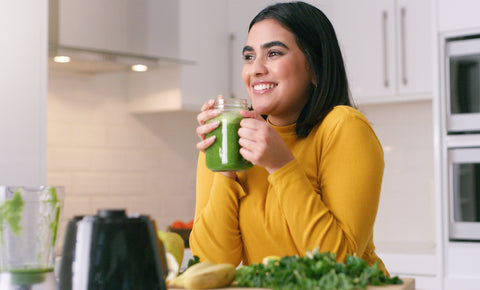
The Health Benefits of a Raw Food Diet
Since the raw food diet includes nutrient-rich plant foods, proponents believe that it offers important health benefits.
Below are some benefits of eating a raw food diet.
Promotes Beneficial Bacteria
A diet rich in raw foods can elevate the number of beneficial bacteria living in your gut and support a balanced gut microbiome.[5]
Plant-based foods, common in a raw food diet, are high in fiber. Fiber acts as a fuel for the beneficial (or “good”) bacteria in your gut microbiome, such as Bifidobacteria.[6]
As your colonies of good bacteria flourish, they also reduce the colonies of pathogenic bacteria, essentially crowding them out.
This helps to balance your gut microbiome and supports your digestive health, immune response, and overall well-being.
Helps with Weight Loss
As mentioned, raw food is rich in fiber. It’s also often lower in calories and carbohydrates. High-fiber foods not only provide helpful GI support, but they also take longer to digest (making you feel full longer). This combination of benefits supports better weight loss over time.
In fact, several studies show that eating a raw food diet helps people lose a significant amount of body fat quickly and keep the weight off.
In one study published in the journal of Annals of Nutrition and Metabolism, people who ate a raw food diet lost 22–27 pounds of body fat over 3 years.[7]
Compared to those eating a more typical American diet, raw foodists have 7–9.4% lower body fat.[8] This means they are slimmer than the average American.
Supports Digestion
The raw food diet is rich in both soluble and insoluble fiber that helps support digestion.
Soluble fibers are considered prebiotics. With the help of healthful beneficial bacteria, fiber is fermented in the colon. This process helps promote the production of short-chain fats[9], which are shown to maintain a healthy colon lining.
Fermentation also produces an acidic milieu that helps keep you healthy when faced with harmful bacteria that may result in Crohn’s, IBS, or ulcerative colitis.
If you are constipated, the insoluble fibers from raw foods can help add bulk to your stool. This allows for food to move more easily through your gut and out of your body.
Maintains Optimal Heart Health
Fruits and vegetables, which are abundant in the raw food diet, can help maintain healthy blood pressure levels and heart health.
Apart from fruits and vegetables, scientists from the Tulane University School in New Orleans agree that eating sprouted whole grains, nuts, seeds, and legumes can keep your blood cholesterol levels low.[10]
In fact, observational studies posted in the journal Nutrients reported that people who are into vegan, raw food diets are 75% less likely to develop blood sugar issues. They are also 42% less prone to heart attacks.[11]
Maintains Healthy Blood Sugar Levels
Foods rich in fiber, such as fruits and vegetables, promote insulin sensitivity for people with blood sugar issues.[12]
This is because fruits rich in fiber increase antioxidants in the body helping maintain healthy oxidative stress in people with type 2 diabetes.
According to Iranian scientists, nuts and legumes can also help maintain healthy blood sugar levels.[13]

The Health Risks of a Raw Food Diet
Just like any other diet, raw nutrition has its own risks.
Below are some possible health concerns that could present with a raw food diet.
Greater Chance of Gut Issues
One of the main components of a raw food diet, for most of its followers, is fruits and vegetables.
While these can add a significant number of vitamins and minerals to your diet, they do have one big drawback: too much can contribute to digestive issues.
Plants contain a high amount of fiber. In moderation, this can encourage healthy bowel movements.
However, too much fiber, or a rapid increase in fiber consumption, can lead to digestive issues such as gas, bloating, and cramps. It can even lead to gastrointestinal issues such as Irritable Bowel Syndrome (IBS) or Inflammatory Bowel Disease (IBD).
Taking a high-quality probiotic supplement can help support your overall gut health and ease potential gut discomfort.
Compromised Bacterial Diversity
Bacterial diversity is crucial to gut health.
The beneficial bacteria living in your gut microbiome perform many roles. And when one bacterial strain is unable to do its job, one or more others step in.
One recent study has shown that a raw food diet can be detrimental to achieving bacterial diversity.[14]
To promote the health, diversity, and overall condition of the beneficial bacteria residing in your gut microbiome, you can add probiotic foods or supplements to your raw food diet.
Higher Risk of Nutritional Deficiencies
People who eat a raw food diet have a higher risk of nutritional deficiencies including vitamin D, vitamin B12, zinc, iron, and omega-3 fatty acids.
For example, it’s recommended that you consume no less than 2.4 mcg of vitamin B12 a day.
However, an Oxford study showed that those who adhere to a raw diet consume less than 2.4 mcg of vitamin B12 daily.[15] Low levels of vitamin B12 in your diet can result in nervous system damage, anemia, poor bone health, and heart disease.
If you choose a raw food diet, here are some ways to make sure you’re getting enough of the right foods to support your body.
- Eat a wide variety of foods, to meet all of your nutritional needs.
- Use an app or find another way to track your nutrients, especially your “macros” (macronutrients): protein, carbohydrates, and fats.
- Add a probiotic supplement to your daily routine. A quality probiotic can help your body digest and absorb nutrients, so you’re maximizing the health potential of every meal.
- Stay hydrated! Water helps your body process nutrients more effectively and transports them throughout your body to wherever they’re needed most.
Can Make It Hard to Maintain a Healthy Weight
A 1999 study on the relationship between eating raw food long-term and body weight shows that those who eat only raw foods for a long time struggle to maintain a healthy weight.
In fact, the study shows that men are 14.7% below their normal weight range, while women are 25% below their normal weight.[16]
This can be due to under-eating or nutrient deficiencies from eating only raw food.
Irregular or Absence of Menstrual Periods for Women
A raw food diet may result in nutrient deficiencies that may cause the abnormal absence of menstruation in women, also called amenorrhoea.
According to a study published in the Annals of Nutrition and Metabolism, a third of women who adhere to a raw diet stop menstruating, while 70% have irregular menstruation.[16]
Since the raw food diet is low in calories, women have the potential to lose significant weight, and this drastic weight loss poses a risk to both their fertility and menstruation.
Increased Risk of Food-Borne Illnesses
According to the FDA, eating unpasteurized fruits and vegetables (juices), raw shellfish and fish, and/or raw milk carries the risk of contracting food-borne pathogens.[17]
These foods may contain bacteria such as E. coli, listeria, salmonella, and campylobacter.
May Weaken Your Bones and Muscles
The raw food diet is low in calcium and vitamin D, which are two important nutrients to maintain healthy muscles and bones.
Compared to those eating the standard American diet, people on a raw diet are shown to have lower bone density and mineral content.[8]
These nutrients are highly recommended especially for people with darker skin or who live in the northern latitudes, as they may not be able to get enough vitamin D from sun exposure alone.
You can take a vitamin D supplement to be sure you are getting enough. Even if you’re not on a raw food diet, it can be very difficult to get enough of this critical vitamin from the sun and food sources alone, so supplementing is a great idea for most people. Plus, when paired with vitamin K2-7, you get the most benefits since these two vitamins work together synergistically to maintain a strong immune system, peak energy, and thriving heart and bone health.
Similarly, people who consume exclusively raw food may have a lower protein intake, which could contribute to bone and muscle mass issues.[18]
Make sure you are getting enough protein (and essential amino acids, aka EAA) by consuming raw vegan protein sources like tofu, tempeh, edamame, lentils, chickpeas, beans, nuts, spirulina, quinoa, chia, hemp, and other seeds, potatoes, dark leafy greens, and protein powders.
Is a Raw Food Diet Healthy or Unhealthy?
According to the U.S. Department of Agriculture’s 2020–2025 dietary guidelines, you should be eating a variety of fruits, vegetables, grains, dairy or fortified soy alternatives, and protein foods for a healthy, balanced diet.[19]
However, the raw food diet is on the low end of the nutritionist-recommended calorie and protein consumption.
Therefore, it’s important to eat a variety of both raw and cooked foods to achieve and maintain optimal health and wellness in the long run.
Set Yourself Up for Raw Food Success with Just Thrive Probiotic
Worried about how your gut microbiome will react to a raw food diet? Want to make sure that you’re promoting your gut health even while choosing raw foods?
Support your gut microbiome—and maintain its healthy bacterial balance—with Just Thrive Probiotic.
- This award-winning probiotic supports your digestive, immune, and overall health with four powerful, DNA-verified strains of spore bacteria, the most potent “good” bacteria available to your body. Plus, it’s 100% guaranteed to “arrive alive” in your gut, ready to get to work.
- All those nutrients that come from your healthy raw foods need to be absorbed by your body before they can be effective. Just Thrive Probiotic improves your gut’s nutrient absorption power so that you can maximize the benefits of your raw food diet.
- Thanks to the inclusion of Bacillus coagulans, Just Thrive Probiotic can also help your body contend with the digestive distress common in a raw food diet, including occasional bloating, gas, constipation, and diarrhea. So you can enjoy all those fresh, raw foods AND feel great while reaping the benefits!
Plus, Just Thrive Probiotic is easy to add to your raw food diet! Because it’s tasteless, colorless, and odorless, it can be easily opened and mixed with any food or drink! Take one capsule on its own daily or sprinkle it into your smoothies or over your salads and other dishes.
>> Support your raw food diet AND your gut health with Just Thrive Probiotic.
Still not sure Just Thrive Probiotic is right for you? Don’t worry, we’ve got your back!
All Just Thrive products come with our Bottom of the Bottle, 100% money-back guarantee.
So if for any reason you don’t love it, you can ask for a full product refund at any time. Even if it’s 3 months or 3 years later. Even if the bottle is empty! You’ll get your money back, no hassles, no hard feelings.
>> Tap HERE to test drive Just Thrive Probiotic, 100% RISK-FREE, and save 30% on your first month’s subscription with code SUB30.
Sources
- Link LB, Jacobson JS. Factors affecting adherence to a raw vegan diet. Complement Ther Clin Pract. 2008 Feb;14(1):53-59. doi:10.1016/j.ctcp.2006.12.005.
- Igwemmar NC, Kolawole SA, Imran IA. Effect of Heating on Vitamin C Content of Some Selected Vegetables. Int J Sci Technol Res. 2013 Nov;2(11).
- Dewanto V, Wu X, Adom KK, Liu RH. Thermal processing enhances the nutritional value of tomatoes by increasing total antioxidant activity. J Agric Food Chem. 2002;50(10):3010-3014. doi:10.1021/jf0115589.
- Newman MJ. Food Safety: Take life easy; eat, drink and be merry. Luke 12: 19b. Ghana Med J. 2005;39(2):44-45.
- Carmody RN, Bisanz JE, Bowen BP, et al. Cooking shapes the structure and function of the gut microbiome. Nat Microbiol. 2019;4:2052–2063. doi:10.1038/s41564-019-0569-4.
- Hidalgo-Cantabrana C, Delgado S, Ruiz L, Ruas-Madiedo P, Sánchez B, Margolles A. Bifidobacteria and Their Health-Promoting Effects. Microbiol Spectr. 2017;5(3). doi:10.1128/microbiolspec.BAD-0010-2016.
- Koebnick C, Strassner C, Hoffmann I, Leitzmann C. Consequences of a Long-Term Raw Food Diet on Body Weight and Menstruation: Results of a Questionnaire Survey. Ann Nutr Metab. 1999 Apr 1;43(2):69-79. doi: 10.1159/000012770.
- Fontana L, Shew JL, Holloszy JO, Villareal DT. Low bone mass in subjects on a long-term raw vegetarian diet. Arch Intern Med. 2005;165(6):684-689. doi:10.1001/archinte.165.6.684.
- Macfarlane S, Macfarlane GT, Cummings JH. Review article: prebiotics in the gastrointestinal tract. Aliment Pharmacol Ther. 2006;24(5):701-714. doi:10.1111/j.1365-2036.2006.03042.x.
- Bazzano LA, He J, Ogden LG, et al. Legume consumption and risk of coronary heart disease in US men and women: NHANES I Epidemiologic Follow-up Study. Arch Intern Med. 2001;161(21):2573-2578. doi:10.1001/archinte.161.21.2573.
- Le LT, Sabaté J. Beyond meatless, the health effects of vegan diets: findings from the Adventist cohorts. Nutrients. 2014;6(6):2131-2147. doi:10.3390/nu6062131.
- Hegde SV, Adhikari P, M N, D'Souza V. Effect of daily supplementation of fruits on oxidative stress indices and glycaemic status in type 2 diabetes mellitus. Complement Ther Clin Pract. 2013;19(2):97-100. doi:10.1016/j.ctcp.2012.12.002.
- Parham M, Heidari S, Khorramirad A, et al. Effects of pistachio nut supplementation on blood glucose in patients with type 2 diabetes: a randomized crossover trial. Rev Diabet Stud. 2014;11(2):190-196. doi:10.1900/RDS.2014.11.190.
- Carmody RN, Bisanz JE, Bowen BP, et al. Cooking shapes the structure and function of the gut microbiome. Nat Microbiol. 2019;4(12):2052-2063. doi:10.1038/s41564-019-0569-4
- Rauma A-L, Törrönen R, Hänninen O, Mykkänen H. Vitamin B-12 Status of Long-Term Adherents of a Strict Uncooked Vegan Diet (“Living Food Diet”) Is Compromised. J Nutr. 1995 Oct;125(10):2511-2515. doi: https://doi.org/10.1093/jn/125.10.2511.
- Koebnick C, Strassner C, Hoffmann I, Leitzmann C. Consequences of a long-term raw food diet on body weight and menstruation: results of a questionnaire survey. Ann Nutr Metab. 1999;43(2):69-79. doi:10.1159/000012770.
- U.S. Food & Drug Administration. People at Risk of Foodborne Illness. Updated 08/01/2023. Available from: https://www.fda.gov/food/consumers/people-risk-foodborne-illness.
- Rizzoli R, Bonjour J-P. Dietary Protein and Bone Health. J Bone Miner Res. 2004;19:527-531. doi:10.1359/JBMR.040204.
- U.S. Department of Agriculture, U.S. Department of Health and Human Services. Dietary Guidelines for Americans, 2020-2025. 9th Edition. December 2020. Available at: DietaryGuidelines.gov.






